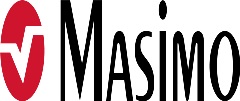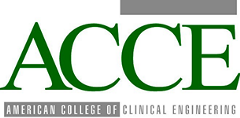Symposiums
Clinical Engineering Symposium
Saturday, June 17 – 7:30 a.m.–10:15 a.m.
Phoenix Convention Center, North Building
Sponsored by 
Navigating Homecare Technologies - Adapting to Shifting Patient Care and Tech Support Challenges at Home
***REGISTER HERE***
Whether we call it “Hospital in the Home”, “In-Home Services”, “Acute Hospital Care at Home”, or any other name, your patients are moving out of your facility and taking devices with them. This opens up new opportunities and challenges in ensuring patients have the right technologies considering their needs and activities, and ACCE is here to share what we have learned so far.
Join us for this half-day working session to share your experience and to hear from your peers on their hospital in the home model. Learn to overcome homecare technology support challenges.
Our stellar line-up of speakers and facilitators will guide you through active learning on topics you just can’t miss to be ready for homecare in your organization:
• Choosing the right homecare technologies
• Technology service and support
• Connectivity and Cybersecurity considerations
• New: Audience-generated discussion questions. Come with your own questions for our experts!
Agenda:
7:15 a.m. - Light Refreshments
7:30 a.m. - 7:45 a.m. - Opening (Kim Greenwood, ACCE President)
7:45 a.m. - 8:45 a.m. - Part 1: Orientation and Level-Setting
Each panelist will describe their current experience and near-future plans.
Presenters:
- Priyanka Shah, MS, ECRI: High level trends and considerations from ECRI members.
- Samantha Moriarty, MEng, BWH: Hospital in the home model, from concept to creation
- Samantha Holligan, MBA, BSN, RN, NE-BC, Mayo Clinic: Virtual Care
- Nadia Elkaissi, CHTM, VA Central Office (19HTM): VA Tele-Technologies
- Jamie Brennan, DNP, RN, CMSRN, NEBC, Masimo: Navigating the transition from hospital to home
8:45 a.m. - 9:00 a.m. - Break
9:00 a.m. - 10:15 a.m. - Part 2: Homecare Considerations Panel Discussion - Active Learning
Skilled facilitators will guide our panelist and audience members through group discussion of the following can't-miss topics:
- Choosing the right homecare technologies
- Technology service and support
- Connectivity and Cybersecurity considerations
- New: Audience-generated discussion questions. Come with your own questions for our experts!
Questions? Contact ACCE at sulyc@accenet.org
----------------------------------------------------------------------------------------------------------------------------------
Industry Symposium
Presented by 
Saturday, June 15 – 5:00 p.m.–6:15 p.m.
Coming Soon
